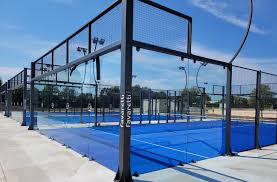

Understanding Padel Cost and Supplier Dynamics
Padel, a fast-growing racquet sport originating from Mexico in 1969, has gained immense popularity over the last few decades. It combines elements of tennis and squash, played in a smaller, enclosed court. As the sport becomes increasingly mainstream, understanding the costs associated with padel courts and the suppliers involved is crucial for those looking to invest in this burgeoning market.
The Rising Popularity of Padel
The surge in padel's popularity can be attributed to its accessibility and social nature. Whether played in singles or doubles, the game is easy to learn, making it welcoming for players of all ages and skill levels. Additionally, the explosive growth of padel clubs and facilities globally has created a booming market that has caught the attention of investors, sports enthusiasts, and entrepreneurs alike.
Cost Breakdown of Padel Infrastructure
1. Construction Costs
Building a padel court is a significant investment, with costs varying depending on several factors such as location, land availability, and materials used. On average, the construction cost for a single padel court can range anywhere from $25,000 to $60,000. Key factors influencing these costs include
- Land Acquisition The price of land can vary widely based on location, proximity to urban centers, and demand for recreational spaces. - Materials The quality of materials used (glass walls, artificial grass, lighting, etc.) will reflect on the overall cost. Opting for high-quality materials can ensure durability and enhance the playing experience but will increase upfront costs. - Labor Costs Depending on the region, labor prices can differ significantly. Areas with a higher cost of living usually have higher labor costs, impacting the overall budget for constructing the court.
2. Equipment Costs
Once the court is built, investing in quality equipment is essential. The cost of racquets, balls, and court maintenance gear can add up. A decent padel racquet typically ranges from $50 to $300, while a pack of padel balls generally costs around $10 for three balls. Additionally, ongoing maintenance, including resurfacing and general upkeep, can incur costs of several thousand dollars annually.
3
. Operational Costs
For facilities operating multiple courts, operational costs become crucial. This includes utilities, staffing, insurance, and marketing. Utilities can fluctuate based on usage, especially when considering lighting for night sessions. Staff salaries can vary according to the services offered, such as coaching and event management.
Supplier Landscape in Padel
As demand for padel increases, so does the number of suppliers in the market. Understanding where to source equipment and building materials is fundamental for anyone entering this space.
1. Construction Suppliers
Reliable suppliers for construction materials are vital. These may include companies specializing in artificial grass, glass, and lighting systems. Collaborating with experienced construction firms that have worked on similar projects can be beneficial. They can provide insights into the best practices for construction and recommend quality materials that enhance player experience and longevity.
2. Equipment Suppliers
Investing in high-quality racquets and balls is essential for shaping the playing experience. Numerous brands cater specifically to padel, providing a range of equipment for both casual and professional players. It's important to foster relationships with reputable suppliers who offer competitive prices without compromising quality.
3. Coaching and Training Suppliers
With padel's growth, demand for coaching services has also increased. Many suppliers offer training programs and certifications for coaches, ensuring that trainers are well-versed in the sport's nuances. Choosing the right coaching partner can guarantee effective training methods that elevate players' skills and enrich their experience.
Conclusion
Investing in padel is not just about building courts but understanding the intricacies of the costs involved and the supplier landscape. By being informed about construction, equipment, and operational costs, investors can make sound decisions that foster growth in this exciting sport. As padel continues to thrive, those who strategize wisely will reap the benefits of this burgeoning market, ensuring that the joy of the game reaches as many players as possible.
High-Performance Industrial Flooring Solutions China Paddle Tennis Court for Sale
High-Performance Industrial Flooring Solutions Durable & Cost-Effective
Homogeneous Transparent Floor – Durable & Stylish Rubber Floor Solutions
Premium Homogeneous Transparent Floor for Durable & Stylish Spaces Rubber Floor Solutions
Premium Sports Floor Solutions Durable PVC Sports Floor & Rubber Floor for Gyms
Durable Rubber Composite Floor Premium Rubber Floor & Mats Solutions